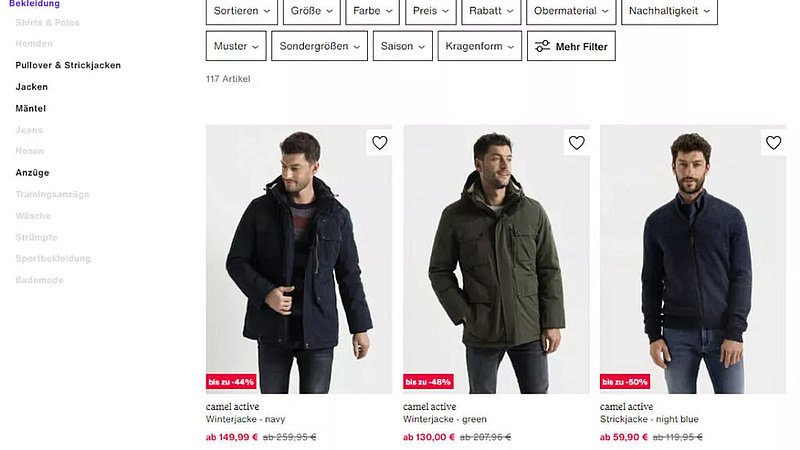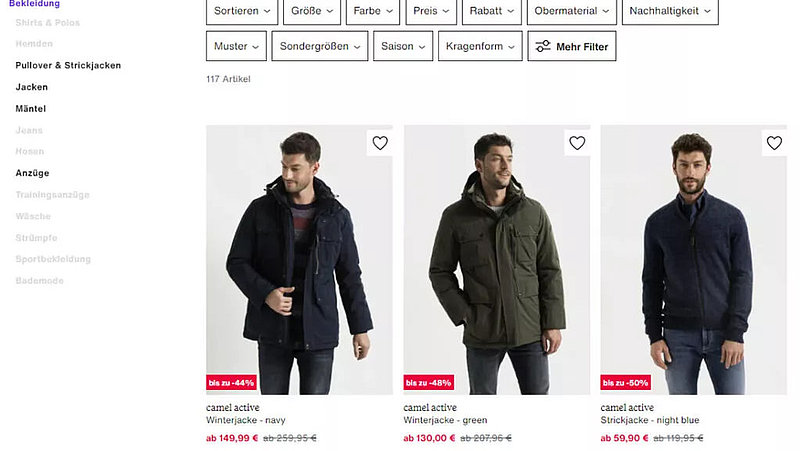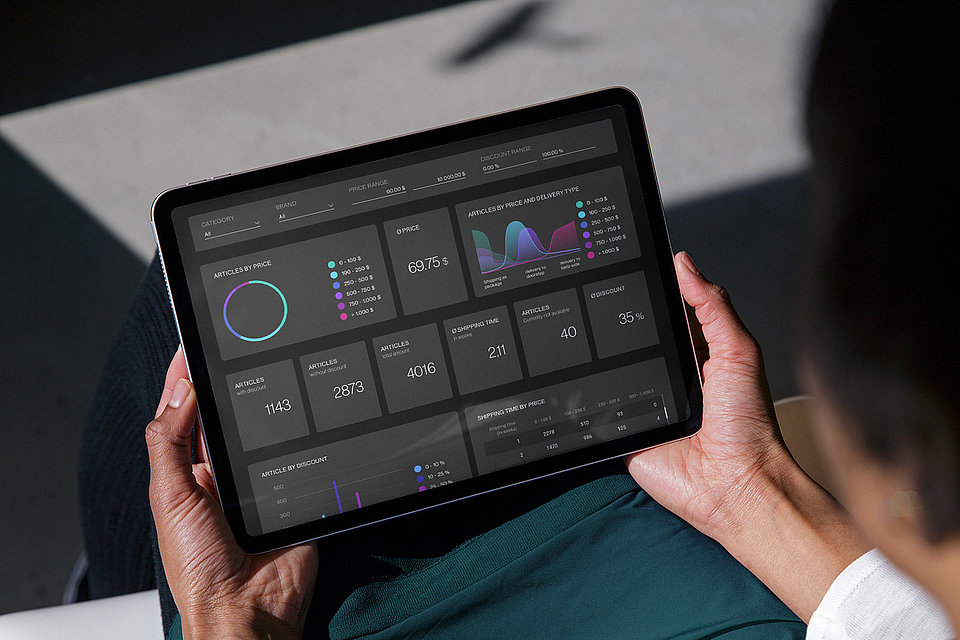Online marketplaces: lifeline for retailers vs. image loss for fashion brands
The marketplace boom continues, but in addition to great potential, it also brings challenges and risks. Reliable market data provides clarity and helps to successfully maneuver through the rough waters.

The pandemic has given online retail a boost and external circumstances have changed in a radical way. In cases where shopping on the internet has not yet long become an indispensable part, this has been set in motion at the latest in 2020 – through the closures of many shops associated with the lockdown.
The fashion industry and especially store-based retailers are strongly affected by the no contact policy and the temporary shop closures. These measures lead to a sudden drop in customer and sales figures for many shops. Many retailers have neither the infrastructure nor the know-how to set up their own online shops ad hoc.
The sunny side: online marketplaces and retailers
Platforms like Ebay or Zalando are therefore increasingly establishing themselves as a lifeline for shop-based retailers. Zalando’s Connected Retail Program is an easy way for retailers to sell their products directly to customers online with little effort. According to its own information, more than 2,000 shops in Germany and the Netherlands are currently connected to the platform.
Retailers as well as platform providers benefit. For Zalando, the availability of articles increases and ensures that goods are always in stock in the long run. Although Zalando is considered Europe’s leading online platform for fashion and lifestyle with over 600,000 items, the platform only covers about 50-70% of the product range available in the shop-based retail trade.
The advantage for retailers is that online sales significantly increase their own stock turnover and they can renew their assortment faster and more frequently. Whether because of the routine seasonal change or because the sale can only take place in the store after a delay and goods on the shelf have to make room for more current collections. Sales on marketplaces offer fashion retailers a quick return on investment. In addition, the last available copies of an unpopular size and other remaining stock can be sold off elegantly. Not only during pandemics.
The downside: fashion manufacturers with well-known brands
But what does the other side of the coin look like? For well-known brands, such mergers are a pain in the neck. While fashion retailers, multi-brand shops and department stores are pushing their goods onto the marketplaces, brand manufacturers have to watch their brand image, built up over years, lose prestige because of (never-ending) sales of stock and shelf goods.
Is a customer still willing to pay the RRP if he or she is always presented with the sale price as the best result in the search results? Very unlikely! Brand perception suffers massively due to the permanent sale.
Established fashion brands have done quite well with their high-price strategy so far. Customers were willing to pay a premium for brand awareness and emotional brand value. Now, however, prices are dropping on marketplaces because retailers are selling leftover clothes in sales below the usual price of the goods. In addition, these remaining items are placed prominently in the search results. The result: the ideal value of a product is stagnating. The prestige value of a fashion brand decreases.
Manufacturers take measures to continuously monitor products and control supply chains. However, this involves enormous manual effort, making it very expensive at every stage of the process and far from up to date for the overwhelming amount of items.
For comprehensive market monitoring,
- each category and each product
- every private label or brand
- every clothing size and colour combination
- every strike price and discount
- needs to be tracked on all available fashion online platforms at a high frequency (i.e. preferably hourly). Only this way manufacturers can promptly identify those retailers who are involved in the price drop of their articles.
These brand protection measures are not only taken to protect the image and reputation of a company. They also serve to contain the long-term loss of sales of a brand.
Manual handling is impossible without serious delays and many staff. The variety of sales platforms, the hourly changes and the diversity of product-colour-size combinations result in a huge black box.
Screening by people is therefore not enough for “big” brands with 100K-350K items. Because in e-commerce, fast reaction times are required – and cost efficiency in any case.
What happens when retailers use online marketplaces as an extension of their sales channels for remaining stock?

The scenario is as follows: a retailer offers a remaining stock, in this case a jacket in men’s size 54 in the colour navy with a discount of 42%. On the platform, this item (and other discount goods) appears as a highlight in the search results. In red you can see “from 149,99 €”.
A customer sees this item as the first result of his search for jackets from a well-known brand. He sees the strike price. He does not see at that moment that this price refers to a certain size-colour combination.

A fashion brand thus appears in the search results mainly with strike prices in the relevant placements. The frustration on the customer side is then correspondingly high when the change in size or colour changes to a higher price on the product detail page.
The association: the consumer is to be lured with discounts and tempted to buy high-priced products. The customer does not perceive that this is caused by a retailer (highlighted in the picture in petrol below). And at that moment, the customer does not think that quality products are worth a higher price. The damage to the image is on the side of the manufacturer or the brand.
Discount promotions by shops on online marketplaces destroy the overall structure of a product when they dump them cheaply. There is an urgent need to track down these offers. Automated. Data-driven. Transparent.
Protecting brand value on e-commerce websites with XPLN
The regular collection of data (price, retailer, size, availability, etc.) on large marketplaces such as Zalando, Amazon, Otto, Ebay or About You helps manufacturers with their brand protection. And data-driven measures (also automated) can be derived from processed analyses.
With this software solution, the following parameters can be accessed automatically on an hourly basis (in brackets: values from the previous scenario):
- Product Name (Winter Jacket)
- Size (54)
- Colour (navy)
- Price (259,95 €)
- Drop price (149,99 €)
- Discount (42%)
- Name of retailer (Leffers Modehaus Store Oldenburg)
- Delivery time (4-7)
However, other parameters could also be extracted on product detail pages, as needed:
- Brand (relevant for manufacturers with several brands under one roof)
- Product group or product category
- Article ID on the corresponding online platform
- Tags and further information
- Availability
- Product description
- Customer reviews
Manufacturers receive transparency about which traders participate on the corresponding platform – with what products and at what prices. With just a few clicks, they can find out in which areas further activities are profitable.
In perspective, however, manufacturers can also think about whether they should sell more on the platform itself. Smartly processed data can provide information on whether and for which products the effort is economical. This could also avoid retailers having to be called in by platform providers to expand the product portfolio.
Customised visualisations = meaningful results
Visualisations based on the collected data offer an efficient and effective preparation of the information obtained. The setting of individual parameters and category levels help to impressively highlight the analyses that are significant for the organisation to all relevant departments and hierarchical levels in the company.
Alert function for extremely fast communication in the event of a change
An alert service provides the support to report alarming changes in product offerings. All-important key figures can be combined in a dashboard. Individual threshold values help to manage daily market monitoring efficiently and in a process-optimised manner.
The software solution GATEKEEPER enables the automated monitoring of product valuations, availabilities, price changes and much more. This gives manufacturers market transparency that goes far beyond price tracking.
Decisions on brand protection measures can be made based on data. And further strategic decisions can be initiated based on the analysis and interpretation of the automatically collected data sets.
Conclusion
Online platforms are used by retailers to offer customers stock and seasonal goods at huge discounts. The brand image of well-known brands suffers from being viewed as discount product providers. The collection of high-quality data to evaluate offers and suppliers is crystallising as a challenge.
The most important thing is to get clarity on what is happening on the marketplaces day by day. However, it is not possible to manually record the number of platforms and colour-size combinations with the required degree of updating.
Automation solutions offer a remedy. Large amounts of data can be collected and intelligently processed to derive individually customised recommendations for action. And integrated alert functions help to proceed quickly and efficiently.

